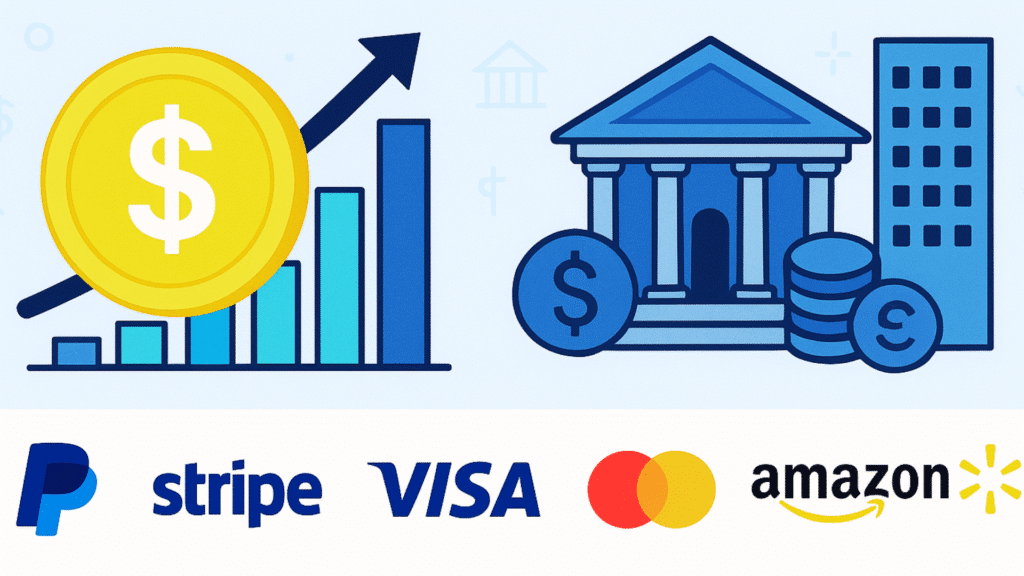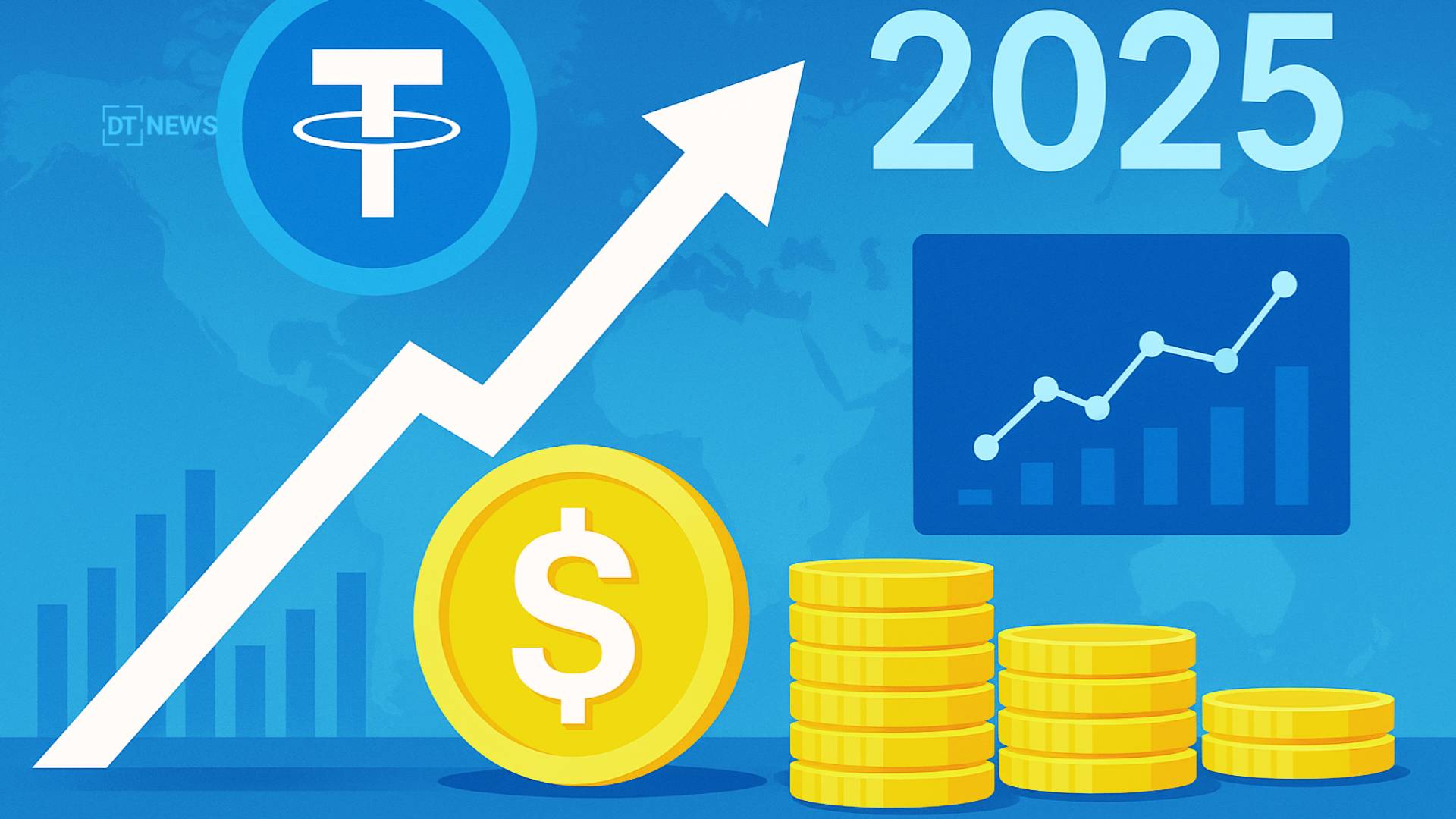According to sources, the stablecoin market cap has crossed $300 billion for the first time. This marks an important step for digital assets in both decentralized finance and traditional financial systems.
- Why is the $300 Billion Threshold Historic?
- Which Coins Dominate the Stablecoin Market Cap?
- How is Stablecoin Activity Evolving?
- Which Blockchains Host the Largest Share of Stablecoins?
- What Role Does Regulation Play in Stablecoin Growth?
- How Do Stablecoins Compare to Traditional Finance?
- What Concerns Still Remain?
- Conclusion
- Glossary
- Frequently Asked Question About Stablecoin Market Cap 2025
Tether (USDT) leads the market with the largest share. USD Coin (USDC) and the growing yield-bearing token USDe are also playing a big role in this rise.
Why is the $300 Billion Threshold Historic?
Reaching a stablecoin market cap of $300 billion shows that the sector has grown from being experimental to becoming more mature. It is now seen as a major part of the financial system, similar to U.S. retail money market funds and some regional banks.
Analysts believe this rise highlights investor trust in digital dollars. They also point to a global move toward quicker, cheaper, and easier ways of settling payments.
Also read: Stablecoin Market Capitalisation 2024 Hits Historic Peak of $168 Billion
Which Coins Dominate the Stablecoin Market Cap?
Tether is still the clear leader, holding 58.44% of the stablecoin market cap with $176.256 billion in supply. Experts say that $USDT remains the main source of liquidity for trading pairs and cross-exchange movement.

USD Coin comes next with a market cap above $74 billion. Its strong audits and openness make it a trusted option for institutions, and many traders call $USDC “the regulated stablecoin” for its focus on compliance.
Meanwhile, USDe has grown into a strong competitor in the stablecoin market. This yield bearing stablecoin now holds a market cap of $14.83 billion.
It is becoming popular in DeFi platforms where users look for stability along with passive earnings. Experts see its rise as part of a larger move toward stablecoins that offer both dollar value and added financial benefits.
How is Stablecoin Activity Evolving?
In Q3 2025, trading volumes and adoption of stablecoins reached record levels. Reports show that more than 70% of transfers came from automated trading bots instead of human users. Specialists note that bots can help increase liquidity in the market.
At the same time, they warn this trend raises doubts about how much real adoption is happening among everyday users. Even with the rise of automated trading, retail use of stablecoins is still strong.
Small transfers below $250 have increased sharply in recent months. This shows that people are turning to stablecoins for payments and personal money transfers. It proves their importance goes beyond trading and makes them useful for daily financial needs.
Which Blockchains Host the Largest Share of Stablecoins?
Ethereum remains the leading network for stablecoin supply with $171 billion issued on its chain. Tron is the second largest platform, carrying $76 billion in circulation. Other blockchains such as Solana, BNB Chain, and Arbitrum together hold close to $30 billion.
This spread shows how stablecoins are now active across several major ecosystems. This distribution shows that the stablecoin market cap is widely spread across different blockchain networks.
As more liquidity moves beyond Ethereum, stablecoins are gaining importance in multiple chains. They are now key for decentralized finance across networks. They also play a role in cross-border payments and supporting institutional-level financial systems.
What Role Does Regulation Play in Stablecoin Growth?
Analysts consider the $300 billion milestone important because it comes at a time of increasing regulatory clarity. In July, the U.S. Congress approved a law called “Genius” to create rules for payment-focused stablecoins.
The law is not in effect yet but is expected to start by January 2027. Regulators may implement it even earlier if they act quickly. Experts say clear rules will help stablecoins grow by removing major obstacles.
They explain that stablecoins are becoming more accepted and regulated. With proper oversight, stablecoins could handle money transfers like banks do. This highlights their growing role in the global financial system.
How Do Stablecoins Compare to Traditional Finance?
At this size, stablecoins are now similar in scale to the largest U.S. money market funds and rival some regional banks. This shows that the stablecoin market cap is no longer just a small crypto tool but a significant financial instrument.
Payment companies such as PayPal, Stripe, Visa, and Mastercard are exploring ways to work with stablecoins. Large retailers including Amazon and Walmart are also preparing to use them for transactions.
Experts say that as adoption grows, the stablecoin market cap could rise significantly. This points to stablecoins becoming a major part of everyday finance.
Also read: The Untold Story Behind Stablecoins’ $283B Surge
What Concerns Still Remain?
Even with strong growth, not all stablecoins in the $300 billion market are considered fully safe by regulators. Many stablecoins are supported by safe assets such as U.S. Treasuries, but some use riskier methods.

Specialists warn that investors should be careful, especially with coins that do not have clear legal rules. A large part of trading is still dominated by two stablecoins, Tether and USD Coin. This concentration could cause problems if either of these coins faces serious issues.
Conclusion
Based on the latest research, the rise of the stablecoin market cap above $300 billion marks an important shift in global finance. Stablecoins have grown from basic trading tools into key infrastructure for DeFi, payments, and institutional use.
Experts say they are becoming central to the way money moves. They are now seen as essential components of the future financial system. As rules for stablecoins become clearer and more industries start using them, their growth is likely to continue.
Analysts say the stablecoin market cap could reach a trillion dollars in the next few years. This growth shows how important stablecoins are becoming in finance. They are gradually turning into a key part of the financial system.
Summary
The stablecoin market cap has reached $300 billion, doubling from last year. $USDT leads with $176.256 billion, followed by $USDC and $USDe. Most stablecoins are on Ethereum, with Tron, Solana, BNB Chain, and Arbitrum also holding supply.
People are using them more for small payments and DeFi, though over 70% of transfers are done by trading bots. Experts say clearer rules and wider adoption could make the stablecoin market cap grow even more in the future.
Stay updated on the booming stablecoin sector and learn how automated trading, DeFi, and blockchain innovations are moving the market only on our platform
Glossary
Trading Bots: Automated systems that handle stablecoin trades and transfers.
Cross Border Remittance: Sending money internationally using stablecoins quickly and cheaply.
GENIUS Act: U.S. legislation giving stablecoins clear regulatory support.
DeFi: Platforms that offer financial services without intermediaries using blockchain.
USDe: A growing yield-bearing stablecoin gaining popularity in DeFi platforms.
Frequently Asked Question About Stablecoin Market Cap 2025
What is the current stablecoin market cap?
The stablecoin market cap 2025 has reached $300 billion which is double from last year figure.
Which stablecoin holds the largest market share?
Tether (USDT) holds the largest market share with $176.256 billion.
Which coins are driving stablecoin growth?
Coins including USDT, USDC, and USDe are driving the growth of stablecoins in 2025
Which blockchain hosts most stablecoins?
Ethereum Blockchain hosts over 70% of all stablecoins in 2025.
Are stablecoins widely used for payments?
Yes, stablecoins are increasingly used for cross border remittances and personal transfers.
Did automated trading affect stablecoin activity?
Yes, over 70% of transfers in Q3 2025 were executed by trading bots which suggest it does affect stablecoin activity.



















































































































